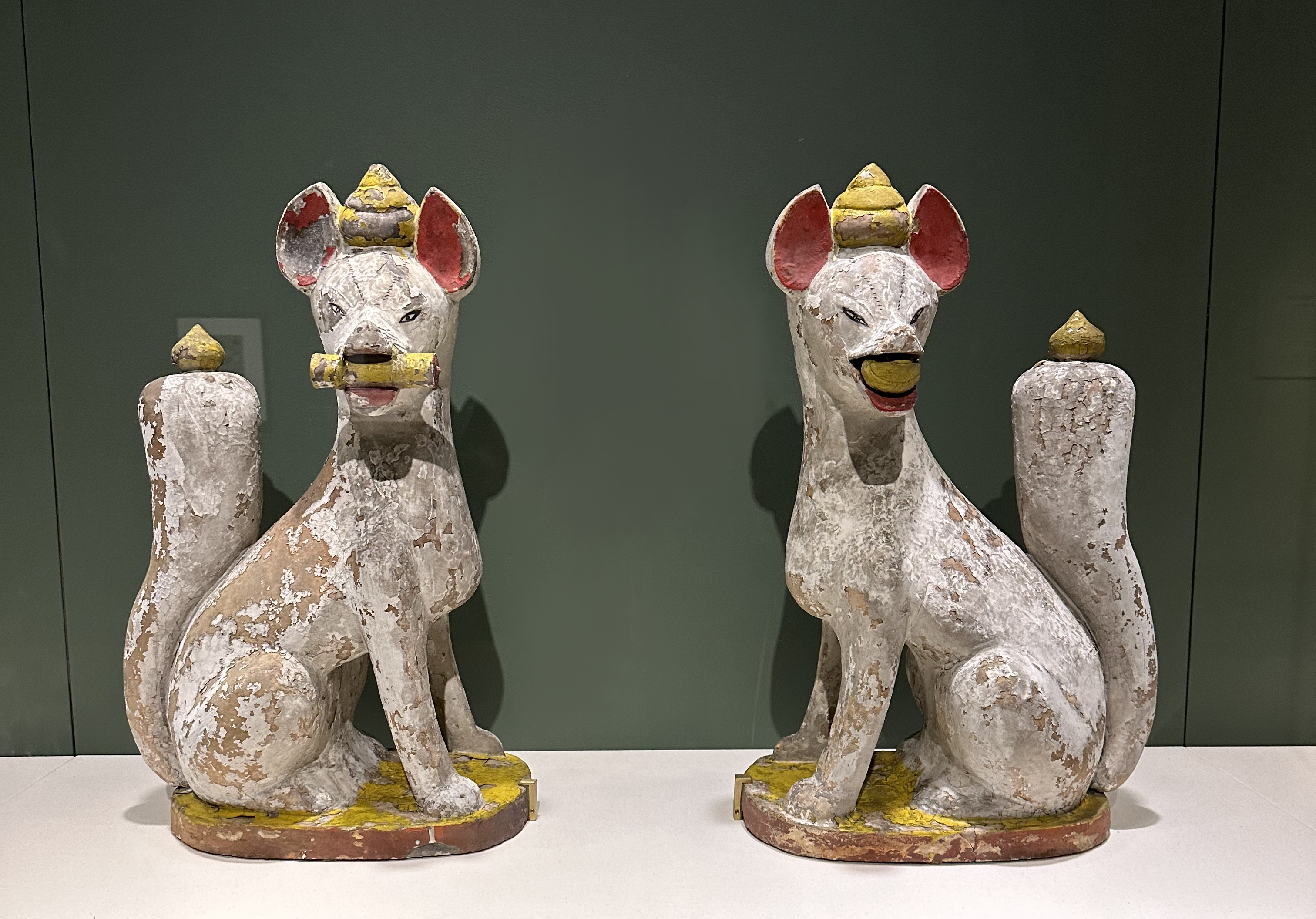The dark, the eerie, the strange. At the Seattle Art Museum, embracing supernatural, spiritual art is a common theme for their events, including the “Deities and Demons: Supernatural in Japanese Art” exhibit.
These qualities can be seen as having a heavy influence on the traditional beliefs of Japan, especially as being represented through their historical art. This event features a wide variety of paintings, sculptures, textiles, and prints representing the root of Japan’s historical yokai.
Through each piece, it’s evident that the artists deeply cultivate their appreciation for this popular folktale. One largely renowned belief includes the folktale yokai: a mysterious phenomena of Japanese folklore, explained only by the yokai (or entities) themselves.
The Western translation of “yokai” is frequently described as literal demons, mostly surrounding our own take on Japanese mythology. But the Yokai world is vast, and much more broad than English translations, as its history dates back all the way to the eighth century with the expansion of visual representation during Japan’s Medieval period.
These shape-shifting spirits, animals and ghouls are simply far too complex for the ordinary terms “demon” or “monster.” According to Teni Wada & Ahmed Juhani in “What is Yokai? 15 Mysterious Japanese Demons,” they are merely an embodiment of a moment: “a feeling of dread and bewilderment, or awe and wonder over an extraordinary event.”
Linked to religious figures and tales, yokai is all about “clashing and harmonizing belief systems: Primarily Shinto,” or Animism, according to Emi Noguchi on “A Guide to Japanese Monsters: Yokai”
The collision between the ancient Japanese religion, Animism, and the many wonders of nature is what manifested the mythological creatures we see in art today. Traditionally connected to Japanese religion, these entities quickly became a main focus for popular entertainment through art, says the Libraries of Ohio State University.
As yokai began to expand out into the artistic realm during the Edo Period, cartoonist Mizuki Shigeru created the manga series “Gegege no kitaro,” best known for Shigeru’s idea to make all characters belong to the mythical creatures themselves.
According to Ohio State University, Mizuki’s work skyrocketed in the late 1960’s as it became adapted for other forms of entertainment, such as animation, live-action films, and other formats played on the big screen.
With the generally religious yokai progressively becoming more of an art representation, the modern-day take on this Japanese folktale can now be viewed at the Seattle Art Museum.

Mazzy Romero/THUNDERWORD
Japanese embroidered wall hanging features two intertwined lion dogs and peony flowers.
Gifted to the exhibit by Mrs. Bethie L. Tornoth and Mrs. Eva Jansen is the embroidered wall hanging of the lion-dog yokai. This silk, Japanese embroidered cloth features two lion-dogs submerged in a deep blue and brown backdrop. Surrounded by large peony flowers, it suggests the theory that the lion-dog had been brought from China via Korea during the Meiji period.
Inari foxes are messengers of the God Inari – protector of agriculture, or rice cultivation. Gifted by the Steiner Helsby Family Foundation, these yokai can also be seen at the exhibit as a pair of low-fired ceramic sculptures with red, white, and yellow paint. As popular God-like figures among Tokyo, it’s often to see shrines of Inari foxes around the city.
As demons, devils or spiritual entities seem to be a common figure of yokai, the exhibit also offers the Oni no Nembutsu. Presented by the Eugene Fuller Memorial Collection, the oni, or devil, can be seen in colored ink with a clay and shell wash. From a general point of view, oni’s are often perceived as fierce demon beggars, yet humorous in their efforts.
In finding yourself intrigued by this legendary wonder, The Seattle Art Museum welcomes any and everyone to this exhibit every Wednesday from 10 a.m. – 5 p.m. The exhibit will run all the way into early June. Located at 1300 1st Avenue (just North of Belltown), this exhibit won’t be the only one catching your eye as the museum presents modern, contemporary and abstract pieces as well.
Surpassing human understanding, these entities hold a certain knowledge you can only attempt to interpret by standing before them and experiencing them yourself.

